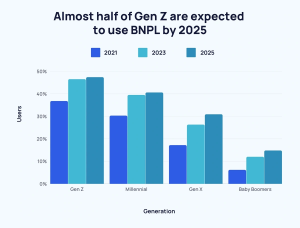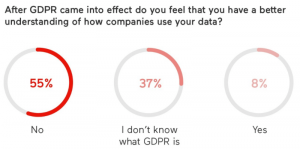In The Dark Side of the Moon, one of the most iconic albums of all time, Pink Floyd reflects on the unpredictability of life, the yearning for connection amid isolation, and the tension between holding on to the familiar and embracing the constant of change:
And if the cloud bursts thunder in your ear
You shout and no one seems to hear.
And if the band you’re in starts playing different tunes
I’ll see you on the dark side of the moon.
As an increasingly disrupted world destabilizes the foundations we’ve come to rely on, how should we respond? The most utilitarian solution may also be the most counterintuitive: Accept the darkness of confusion and uncertainty as a necessary step toward finding your way back into the light.
The message offers comfort, and the insight gives us hope. However, moments after the album’s final track seems to have ended, a distant voice leaves us with one parting thought:
There is no dark side of the moon, really. Matter of fact, it’s all dark.
Having made peace with the inevitability and ultimate benefit of pushing through periods of darkness, these final words are themselves dark and unsettling. We’re left with the jarring conclusion that there may be no light for us to find at the end of the tunnel.
And yet, astronomically speaking, there is no reason for concern. Because, as a matter of fact, there really is no dark side of the moon at all.
Unlike the Earth, the moon does not rotate on its axis. Rather, as the moon revolves around the Earth, it always keeps the same side facing its home planet. That means that every side of the moon will face the sun at some point during the 29-and-a-half-day lunar cycle. The only thing making the so-called dark side of the moon dark is that we on Earth cannot see it. Which brings us to this week’s addition to the Ethical Lexicon:
Penumbral (pe·num·bral/ peh-nuhm-bral) adjective
- Of, causing, or being the partial shadow outside the complete shadow of an opaque body, such as a planet, where the light from the source of illumination is only partly cut off
- Relating to or being a shadowy, indefinite, or marginal area
In his classic bestseller, Thinking, Fast and Slow, Nobel Prize-winning economist Daniel Kahneman describes how our brains are wired to invalidate any lack of information. Because we can’t rely on more than what we know, we subconsciously overvalue the data we have while negating the importance of data we might be missing. The resulting mindset can be summed up as WYSIATI: What You See Is All There Is.
Consequently:
- We can’t see the far side of the moon; hence, it must be dark.
- We can’t find merit in opposing viewpoints; hence, they must be wrong.
- We believe that we have no options we haven’t considered; hence, there aren’t any.
You may have heard the (likely) apocryphal story of the truck that got wedged under a low-clearance overpass. Unable to budge it forward or backward, traffic officials debated their options. Hire a bulldozer to push the truck out? Position hydraulic jacks to elevate the bridge? Saw off the top of the truck?
The crew deliberated for hours until a seven-year-old boy wandered by and stopped to watch the spectacle. After observing the debate go round and round, the little fellow finally piped up:
“Why don’t you let some air out of the tires?” Sure enough, releasing a bit of pressure from the tires lowered the truck several inches, allowing it to back out from under the bridge and pull onto the shoulder. Only through the eyes of a child did the simplest solution become obvious.
This is the real benefit of diversity in the workplace. Team members coming from different backgrounds, different generations, different reference points, and different styles of thinking will naturally challenge one another to think in new and creative ways.
Solutions that lurk invisibly in the shadows of unexplored imagination become revealed, either solving problems themselves or steering discussion down new avenues of thought to uncover previously unrecognized possibilities.
Ironically, it’s our fear of probing the penumbral darkness of unconventional thinking that leaves us groping through the murky confusion of unsolved difficulties. But if we’re willing to work our way through the darkness, the shadows of uncertainty will inevitably give way before the illumination of inquiry.
All it really takes is resolution and effort. As King Solomon said: Do you see the man diligent in his work? He shall stand before kings, and need not present himself before those who stand in shadow.
The answer is frequently in the room. But it only presents itself once we’ve taken the first step by looking for it.
- Of, causing, or being the partial shadow outside the complete shadow of an opaque body, such as a planet, where the light from the source of illumination is only partly cut off
- Relating to or being a shadowy, indefinite, or marginal area
- We can’t see the far side of the moon; hence, it must be dark.
- We can’t find merit in opposing viewpoints; hence, they must be wrong.
- We believe that we have no options we haven’t considered; hence, there aren’t any.
(3)









